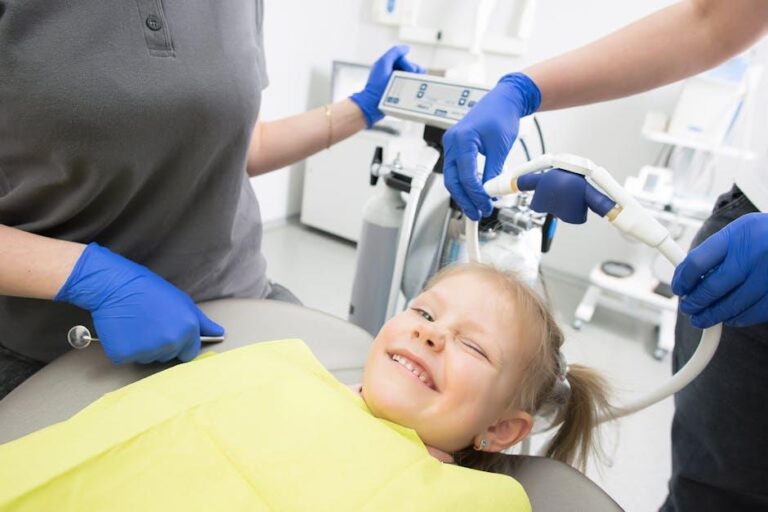1 in 3 Kids Has Dental Problems, Poll Finds – U.S. News & World Report
Recent polling data reveals a concerning trend: one in three children in the United States is currently experiencing dental problems. This statistic highlights a growing pediatric oral health crisis that parents, educators, and healthcare providers need to address urgently. Dental problems in children can range from mild cavities to serious oral infections that affect overall wellbeing. In this article, we will explore the causes, consequences, and prevention of dental problems in kids, backed by insights from the U.S. News & World Report’s findings.
Understanding the Scope of Dental Problems in Children
The poll indicates that nearly 33% of children—that’s approximately 1 out of every 3—deal with dental issues at some point during childhood. These issues include:
- Tooth decay (cavities)
- Gum disease or gingivitis
- Oral infections and abscesses
- Misaligned teeth and bite issues
- Chronic tooth sensitivity
More alarmingly, untreated dental problems can lead to pain, difficulty eating, speech issues, and even impact academic performance due to missed school days.
The Top Causes of Dental Problems in Kids
Several factors contribute to the high prevalence of dental issues among children in the United States. Understanding these causes is crucial to preventing long-term damage.
1. Poor Oral Hygiene Practices
Many children do not brush or floss regularly or properly, allowing plaque buildup and bacteria to damage teeth and gums over time.
2. High Sugar Consumption
Sugary snacks, candies, and sugary drinks increase the risk of tooth decay. Sugar fuels the bacteria that cause cavities, making diet a critical factor in dental health.
3. Limited Access to Dental Care
Socioeconomic factors, lack of insurance, or shortage of pediatric dentists in some communities prevent kids from receiving timely dental checkups and treatments.
4. Lack of Parental Awareness
Some parents underestimate the importance of baby teeth and early dental visits, leading to delayed interventions.
Impact of Dental Problems on Children’s Overall Health
Dental health is closely linked to overall health, especially in children. Untreated dental issues can cause:
- Chronic pain and toothache
- Nutritional deficiencies from difficulty eating
- Sleep disturbances
- Speech impediments
- Psychological effects such as low self-esteem and social anxiety
Moreover, severe infections in the mouth can spread to other parts of the body, posing serious health risks.
Essential Preventive Measures for Parents and Caregivers
Preventing dental problems from an early age is vital. Here are some actionable tips to safeguard your child’s oral health:
Practical Tips for Maintaining Kids’ Dental Health
- Start Early: Clean your baby’s gums with a soft cloth even before teeth appear.
- Regular Brushing: Help children brush twice daily with fluoride toothpaste.
- Limit Sugary Foods: Reduce intake of sweets, sodas, and sticky snacks.
- Schedule Dental Visits: Take your child to a pediatric dentist by their first birthday.
- Use Dental Sealants: Sealants can protect chewing surfaces from cavities.
- Encourage Healthy Eating: Provide calcium-rich foods and limit acidic drinks.
Case Study: Improving Oral Health in Underserved Communities
To address the dental care gap, community programs have launched initiatives targeting at-risk children. For example, a recent program in Ohio reduced childhood cavities by 20% through school screenings, free fluoride treatments, and education seminars for parents.
| Program Component | Impact |
|---|---|
| School Dental Screenings | Early detection of dental issues |
| Free Fluoride Treatments | Strengthened enamel, fewer cavities |
| Parent Education | Improved home oral care routines |
Frequently Asked Questions (FAQs)
At what age should a child first visit the dentist?
The American Academy of Pediatric Dentistry recommends a child’s first dental visit by age one or within six months after the first tooth erupts.
How often should kids brush their teeth?
Children should brush their teeth twice daily with fluoride toothpaste for at least two minutes each time.
What signs indicate a child might have dental problems?
Look for symptoms such as tooth pain, sensitivity to hot or cold, visible holes or discoloration in teeth, swollen gums, or bad breath.
Conclusion: Prioritize Your Child’s Dental Health Today
The alarming statistic that 1 in 3 children in the U.S. suffers from dental problems serves as a wake-up call to parents and caregivers everywhere. Maintaining good pediatric oral health is foundational not only for a bright smile but also for a child’s overall quality of life and well-being. By instilling healthy habits early, limiting sugar, and scheduling regular dental visits, we can help reduce the prevalence of dental issues and ensure that our children grow up with strong, healthy teeth.
Remember, dental health starts at home, but professional guidance is essential. Don’t wait—book your child’s next dental appointment and foster habits that will benefit them for a lifetime.


